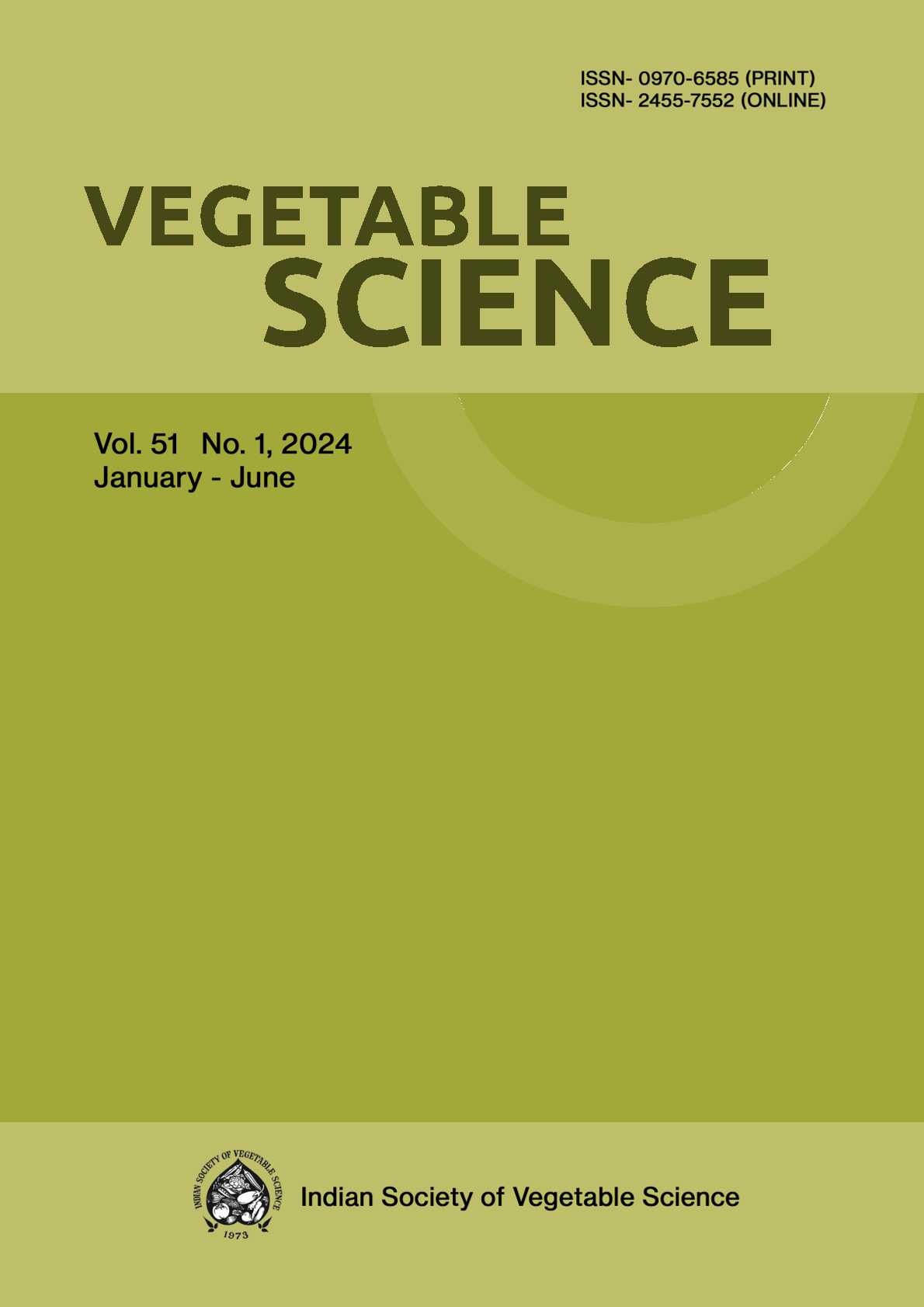Combining ability and heterosis for TSS and seed traits in cucumber (Cucumis sativus L.)
DOI:
https://doi.org/10.61180/5n4j4x71Keywords:
Cucumber, combining ability, heterosis, residual heterosis, seed germination, seed vigour, TSSAbstract
Heterosis breeding plays a major role in crop improvement for better yield and quality attributes. Cucumber, being monoecious and cross pollinated inn nature, contains more number of seeds per fruit and provides ample scope to harness hybrid vigour. Therefore, the present study was carried out to work out combining ability and heterosis for total soluble solids (oB) and seed traits viz., seed germination (%), seed vigour index-I and vigour index-II. The experimental material comprised of F1 and F2 population of 18 crosses,
developed by crossing six lines and three testers. All thnine parents and their hybrids (18) indicated highly significant differences among the parents, F1’s and F2’s for all the traits studied. Experimental results revealed that parents viz., LC-1-1, LC-2-2, CGN-20515, Poinsette and K-75 and cross combination viz., LC-1-1 × K-75, LC-1-1 × Poinsette, LC-2-2 × K-75, LC-2-2 × Poinsette and CGN-20515 × Poinsette were found superior on the basis of overall performance and heterotic response (heterosis in F1 and residual heterosis in F2) for all the traits viz., TSS, seed germination and SVI-I and -II. These parents and hybrid combinations could be exploited commercially for the development of hybrids/ varieties for better TSS and seed trait in cucumber.
Downloads
Published
Issue
Section
License

This work is licensed under a Creative Commons Attribution-NonCommercial-NoDerivatives 4.0 International License.






